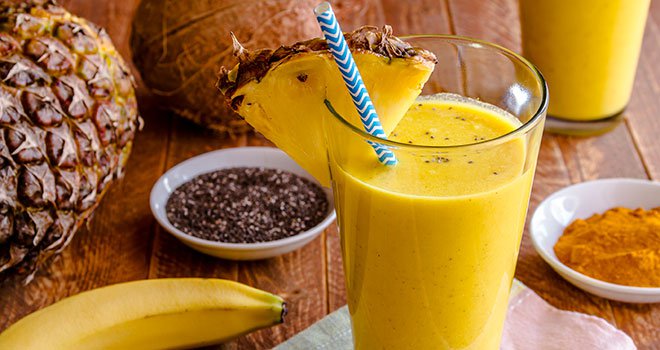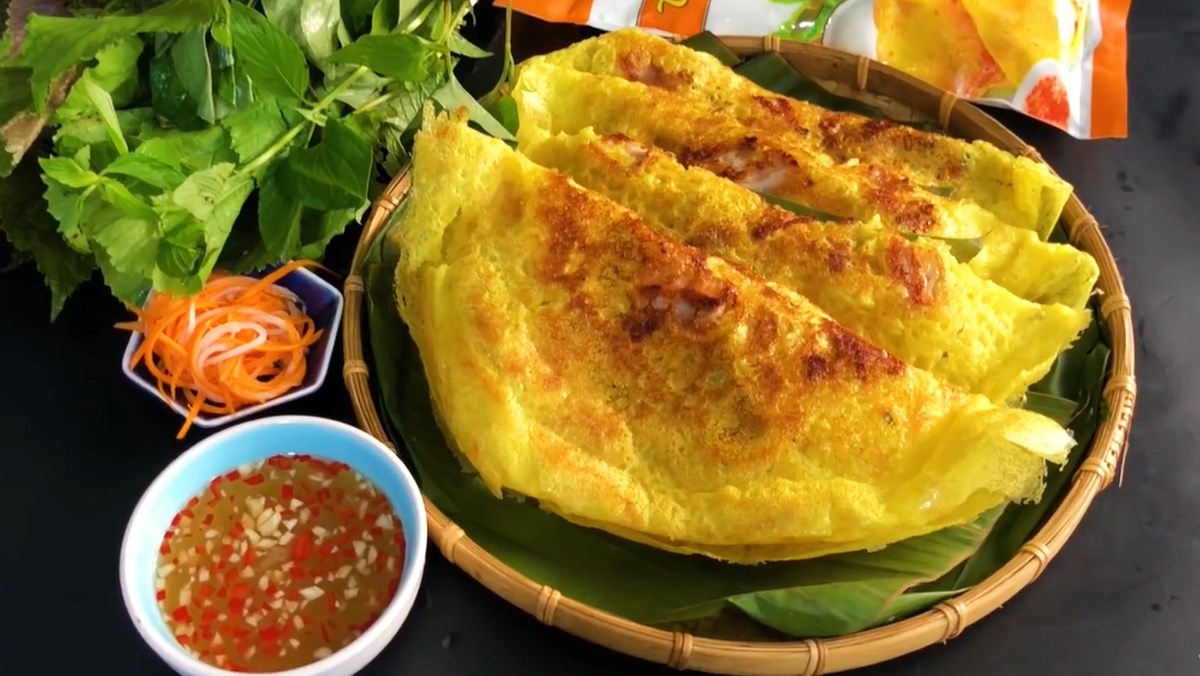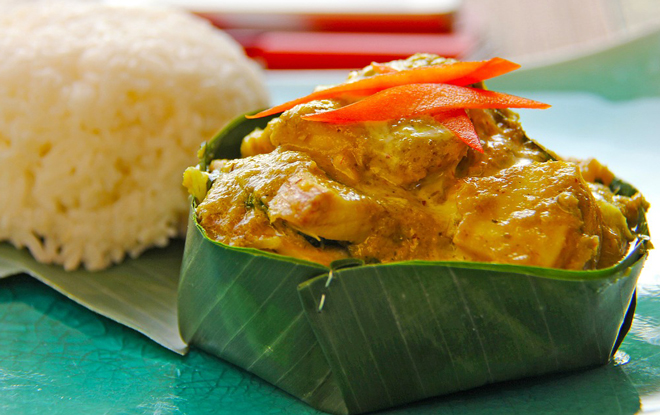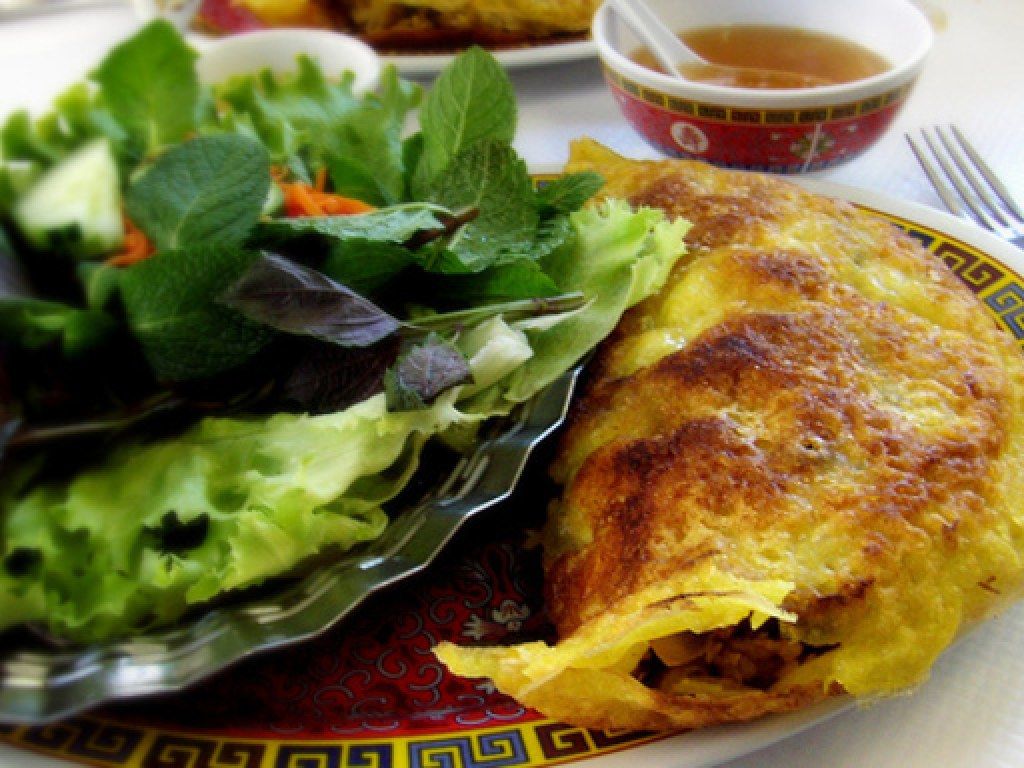The term “turmeric” comes from the Spanish which itself borrowed from the Arabic kurkum, which originally referred to saffron.
Turmeric is a spice that has been traded for so long that it is not clear where it comes from. But it is thought to come from the south or the south-east of Asia, perhaps more specifically from India, from where it would have spread throughout Asia, as well as to the Middle East, thousands of years ago. Its use in India dates back to Vedic times, that is, 4000 years or more. It was used in cooking, medicine, as well as in religious ceremonies. In China and the East, it has also been used for a long time.
On the other hand, in the West, apart from its medicinal and tinctorial uses, its use has never been very widespread. In medieval Europe, it was practically only the Spaniards to appreciate it, possibly under the influence of the Arabs who occupied their country for several centuries. Today it is more popular, although generally restricted to Indian or Oriental cuisine. India is the world’s largest producer and consumer of turmeric. China, Bengal, Taiwan, Cambodia, Java, Australia, the West Indies, Indonesia, the Philippines also cultivate it. Other species of turmeric are cultivated in Southeast Asia for their young shoots, leaves, inflorescence or rhizomes, which are used in cooking or herbalism.
Ground turmeric is a source of iron. Each body cell contains iron. This mineral is essential for the transport of oxygen and for the formation of red blood cells in the blood. It also plays a role in making new cells, hormones and neurotransmitters (messengers in nerve impulses). It should be noted that the iron in foods of plant origin (such as turmeric) is less well absorbed by the body than the iron in foods of animal origin. However, the absorption of iron from plants is enhanced when it is consumed with certain nutrients, such as vitamin C.
Ground turmeric is also a source of manganese. Manganese acts as a cofactor of several enzymes that facilitate a dozen different metabolic processes. It also participates in the prevention of damage caused by free radicals.
Turmeric is used both as a spice and as a coloring in food preparations. It is also one of the main constituents of curry, a mixture of spices particularly used in Indian cuisine. Still few studies have evaluated the effects of consuming turmeric. In addition, most of them used turmeric (or its active ingredients) in amounts greater than what could be consumed commonly, making it more of a supplement than the usual spice.
Antioxidants are compounds that protect cells in the body from damage caused by free radicals. These are very reactive molecules that are believed to be involved in the development of cardiovascular diseases, certain cancers and other diseases linked to aging. In one study, turmeric ranked fifth for its antioxidant content among more than 1,000 foods analyzed (calculated from 100g of food). Since a usual serving of turmeric is instead around 2g (5ml), it still contributes less than other foods to our daily antioxidant intake. Turmeric contains flavonoids and phenolic compounds, but it is curcumin that is considered to be its main antioxidant compound.
Curcumin is a compound of the curcuminoid family. It has different properties which have mainly been demonstrated by studies carried out in vitro as well as in animals. Among other things, the antioxidant effect of curcumin suggests a protective effect against diseases related to oxidative stress (such as cardiovascular disease and Alzheimer’s disease). Curcumin also has anti-inflammatory properties and may help prevent cancer at several stages of its development. These beneficial effects have not all been studied in humans and the amounts of turmeric needed to observe them are not always specified.
Turmeric occupies an important place in the diet of the people of India, who consume up to 2 g per day. Although no studies directly demonstrate this, there appears to be a link between particularly high consumption of turmeric and the low incidence of certain cancers (such as colorectal cancer) in India and other Asian countries. In smokers, a clinical trial has shown that consuming 1.5 g of turmeric daily for 30 days decreases carcinogenic compounds in the body. Other preliminary studies demonstrate the potential anticancer activity of curcumin when consumed in amounts often greater than what could be consumed daily as turmeric. Several studies in animals and in vitro support this protective effect of curcumin, particularly against gastrointestinal and colorectal cancers. Although the mechanisms of action have yet to be elucidated, it is through its antioxidant and anti-inflammatory properties that curcumin may exert its anticancer effects. Some authors assume that the consumption of 1 tsp. (5 ml) of turmeric per day could provide the amount of curcumin needed to exert a preventive effect against cancer.
Turmeric is traditionally used to treat various gastrointestinal disorders, such as inflammation and stomach ulcers. In this sense, it has been shown that a turmeric extract inhibits the secretion of gastric acid in animals, thus being able to decrease the formation of ulcers. Since curcumin does not appear to be responsible for these effects, further studies will need to be done to find out which active ingredients contribute to these effects. In addition, consuming 3 g of turmeric daily for 12 weeks resulted in complete regression of stomach ulcers in 75% of subjects. However, this study did not use a control group (placebo) and other studies in animals have shown opposite effects. Thus, better controlled clinical studies should be performed before encouraging the consumption of turmeric for the treatment of stomach ulcers.
A few studies have shown the effectiveness of turmeric extract in preventing the oxidation of LDL (“bad” cholesterol) cholesterol as well as lowering total cholesterol in animals. It is increasingly clear that curcumin and its metabolites (obtained during the conversion of curcumin to other compounds in the body) are partly responsible for these effects. These results suggest that turmeric may prevent the onset of atherosclerosis and other risk factors for cardiovascular disease, but more human studies are needed.
Epidemiological studies have shown that the prevalence of Alzheimer’s disease is lower in some populations in India compared to other countries. One of the reasons given for this observation was the higher consumption of turmeric in India, but this explanation is still not supported by scientific data. It has been shown in animals that the consumption of curcumin improves cognitive deficits linked to Alzheimer’s disease, through mechanisms that are still little known. Probably the different properties of curcumin (such as antioxidant, anti-inflammatory and cholesterol lowering properties) could be associated with this effect. A study is underway in people with Alzheimer’s disease to assess the effectiveness of curcumin in slowing the disease.
Turmeric is traditionally used to protect the liver against various attacks. Some studies have shown a hepatoprotective effect of turmeric in vitro and in animals, but no human data are currently available. Additionally, turmeric extracts have demonstrated antimicrobial properties against a variety of pathogenic bacteria, parasites and fungi, in vitro and in animals.
When turmeric is ingested, only a small proportion of the curcumin is absorbed into the body. On the other hand, the simultaneous consumption of pepper greatly increases the bioavailability of curcumin. So, adding pepper to a dish containing turmeric is a simple way to increase the therapeutic potential of curcumin.
Store the powder in an airtight container in a cool, dry place and protected from light.
How to prepare turmeric
Turmeric is ideal to accompany your dishes, such as broccoli and turmeric soup. Whether you like to use it to color, spice up or for its health benefits, turmeric is a real ally for making healthy, colorful and exotic dishes.
• It can color various preparations, such as pancake or waffle batter, or even cauliflower, which has first been cooked for a few minutes in boiling water, then sautéed with onions. Add a little water, a chopped hot pepper, grated coconut, turmeric, salt and pepper and cook until tender. At the end of cooking, drizzle with a drizzle of lemon juice;
• Or we can color the vinaigrettes and, why not, the ice creams or the sorbets.
• It can be seasoned with soup, cream or velouté, for example a cream of zucchini or squash. To give it a little consistency, cook rice in it before passing the preparation in a blender, and to give it a little tangy note, add a dash of lemon juice at the end of cooking;
• Pilaf: add some to bulgur pilaf, quinoa, amaranth, wild rice, etc. ;
• It can also be used in cucumber marinades, along with dill leaves and seeds.
• In India, it is used liberally in rice, potatoes, lentils and vegetables, and it is used in almost all curry dishes as well as in chutneys;
• In Réunion, it is used to bind sauces and correct the acidity of certain dishes;
• Nasi kuning (yellow rice): this festive dish from Indonesia is prepared with long grain rice, coconut milk, chicken broth (which can be replaced by vegetable broth), turmeric, lemongrass, cinnamon, cloves, pandan leaves (sold in Asian grocery stores), salam leaves (a plant from the myrtaceae family, which can be replaced by bay leaf) and rhizome galangal (fresh or canned in Asian grocery stores). Place all the ingredients in a pot or rice cooker. Remove leaves before serving. Rice is usually presented in the form of a large cone surrounded by vegetables and meat, fish or seafood;
• Piccalilli: this marinade created by the English during their occupation of India includes various vegetables (baby onions, cucumber, cauliflower, green beans, green tomatoes) which are left to macerate for 24 hours with salt, then drained. They are then cooked with vinegar, flour, sugar (or honey) and turmeric, then placed in canning jars;
• Moroccan chicken: mix 1 tbsp. flour with 1 tbsp. of cinnamon, cumin and turmeric. Coat the pieces of chicken with it, then sauté for 5 minutes on each side in a little oil. Dilute 1 tbsp. flour in broth, add to chicken with dates and almonds, cover and cook for 10 minutes or until chicken is cooked through;
• Indonesian Rendang: this dish made from thin slices of beef is prepared by marinating the meat for 30 minutes in a mixture of soy sauce, onion, garlic, ginger, galangal, turmeric and water. Pass all the ingredients in a blender. Use only half the sauce to marinate the meat. The other half will be mixed with coconut milk and lemongrass, then heat over low heat until reduced by half. Then, mix the two preparations and cook for about 50 minutes. Serve over rice.
















